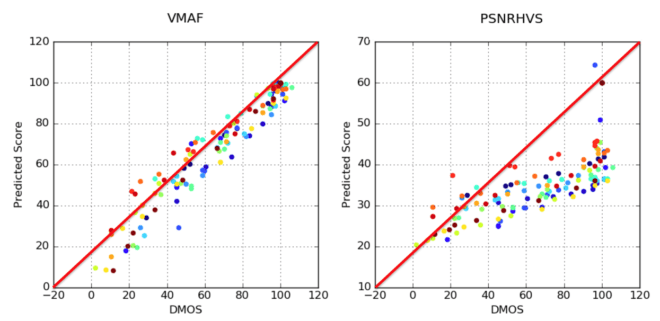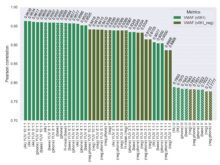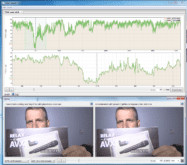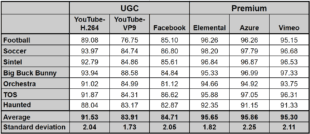These are the most popular video quality metrics-related articles on the Streaming Learning Center over 2019-2020. I hope you find this list of resources useful.
Installing and Using Netflix VMAF-Master – I call it VMAF-Master because that’s the name of the ZIP file you download from Github here, though the Windows executable that I used and downloaded from here was called vmafossexec.exe. It’s a command-line utility that’s fast and functional, though lacking some of the creature comforts of tools that you actually pay for. As the name suggests, you can compute VMAF, but also the PSNR, SSIM, and MS SSIM metrics. In this quick review, I’ll help you get the Windows executable installed, show you how to use all versions of the program, and then discuss its strengths and weaknesses.
Best Practices for Netflix’s VMAF Metric – Zhi Li, senior software engineer at Netflix, recently co-wrote a paper entitled VMAF: The Journey Continues posted on the Netflix Technology Blog on Medium. After reviewing why VMAF was developed, how it’s been adopted in the industry, and some recent improvements, the paper discusses some best practices for using VMAF. In particular, this last section will be valuable to anyone who uses this quality metric.
VMAF is Hackable: What Now? – What’s new with VMAF? Well, it turns out that it’s pretty easy to hack with simple contrast adjustments. The first clue came from a paper by several staff members of the Moscow State University graphics department who produced the aforementioned Video Quality Measurement Tool and many codec comparisons.
Netflix Addresses VMAF Hackability with New Model – L/DR: Netflix updates VMAF to include a new model that reverses out the effects of techniques like sharpening, contrasting, and histogram equalization.
Compute Your Own Bjontegaard Functions (BD-Rate) – I have never used the Bjontegaard Metric in any articles, books, or other works because I thought it was wonky and impossible to calculate. When a recent consulting project required BD calculations I dug in, and (as always seems to be the case) found it both simpler and more useful than imagined. Here’s how you can do the same.
Video – Two Free Video Analysis Tools; MediaInfo and Bitrate Viewer – The video below shows two tools that I’ve installed on every computer that will run them; MediaInfo on all Windows, Linux, and Mac workstations, and Bitrate Viewer, which is Windows only. If you don’t know about these tools, you’ll find the seven-minute video very, very useful.
New ITU-T Metrics for QoE and Video Quality Show Great Promise – While standards-based video codecs like H.264 and HEVC tend to dominate, standards-based video quality metrics have never risen to the same usage or attention level. With two innovative and highly accurate metrics now available from the ITU-T, this may change in the near term.
Mapping SSIM and VMAF Scores to Subjective Ratings – Understanding how SSIM and VMAF scores relate to actual human quality ratings.
Collection of VMAF Resources – A colleague asked for some resources relating to VMAF. Rather than answer in an email I thought I would create a post around it. Some of these are from Netflix, most from me (Jan Ozer). I’ve broken the items into three groups; Computing VMAF, Using VMAF, and About VMAF.
 Streaming Learning Center Where Streaming Professionals Learn to Excel
Streaming Learning Center Where Streaming Professionals Learn to Excel








